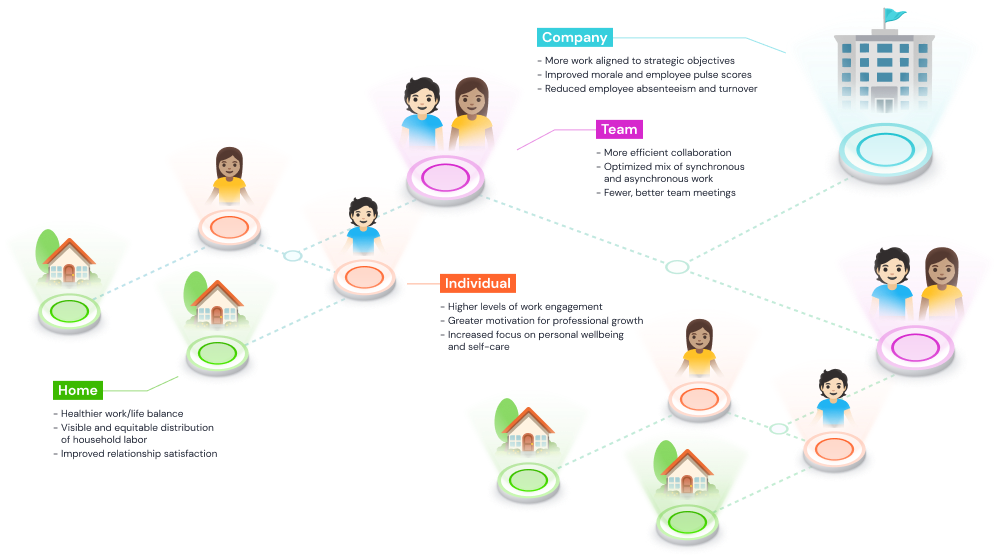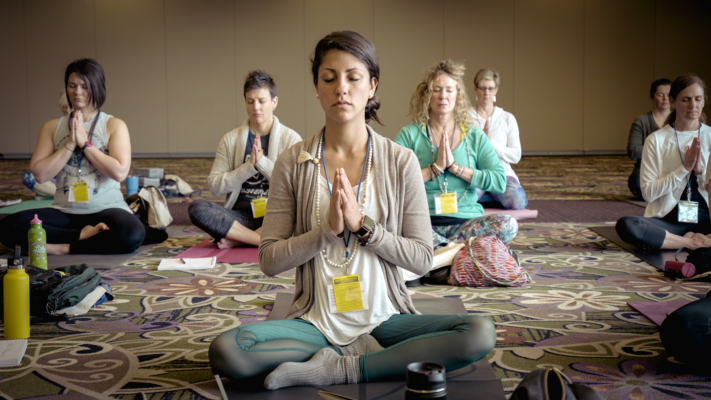
The Butterfly Effect 🦋of Adaptability & Resilience Skills
10 min
September 22, 2022 · 5 min read

If you struggle to complete your ever-expanding to-do list, you are by no means alone. Pushing through can work, but if you want to actually create lasting change you will need to go beyond that–dive into the “why”.
In some cases, it will be a simple case of organization or lack of it. But often, it’s much deeper and is related to overall wellbeing.
Most of us intuitively understand that how we feel about our work and personal obligations is in part due to the reality of what is in front of us. It’s also related to our ability to handle that reality when it’s occurring.
One single night of poor sleep will not only reduce your daily performance but also your ability to handle day-to-day stresses. At the same time, wellbeing is about much more than whether you got your 8 hours last night. Understanding it in depth can dramatically help you be more effective.
Alongside our Wellness Advisor, Darlene Thomas, Ph.D.–we have broken down wellbeing (sometimes referred to as wellness) into 8 different dimensions outlined in this blog post. Evaluating yourself against these dimensions can help you discover where you need to focus to feel more fulfilled every day.
Stress is never going to go away. And that is not by definition a bad thing. In fact, manageable levels of stress can improve performance.
That’s why world records are often broken at the Olympic games. You may have heard the phrase, “A diamond is just a lump of coal that handled stress very well.”
It is important to realize that no life is simple. There will always be:
Personal growth is largely dependent on how you cope with stress and process strong emotions.
But, it is also important to understand that your ability to deal with these challenges is not just innate. You will be better prepared to handle stress if you pay attention to the other wellbeing dimensions we list here.
Conversations about money are sometimes the most difficult ones we can have with our loved ones. Even with ourselves. But very few of us have enough financial resources that we never have to think about money.
As difficult as it can seem to be, taking the time to develop a realistic plan for expenses, and ideally planning for the future, can dramatically reduce the stresses associated with finances in your life.
Be honest with your finances and analyze your income versus your spending. Is your current or forecast level of debt sustainable? And if not, how do you plan to adjust your income or expenses to fix it?
What resources will the future you require, and what can you do now to mitigate unpredictable stress? Strategize ways on how you can remove existing stress, too. It can be helpful to work with an independent third party on this–someone that can help you approach the situation dispassionately.
Regardless of whether you fill your recycling bin each week, you do exist in a physical environment. And you may have noticed that the nature of that environment can have a dramatic effect on your wellbeing.
For example, you might get more done each day in your favorite coffee shop. Or you may find that relaxing by the lake does wonders for your energy levels.
How you interact with your environment influences your motivation on a day-to-day basis. Find the environments that work best for you in and outside of work and ensure that you regularly spend time in those places.
In cases where you can control what is your working environment, be intentional about what is in (and not in) the spaces you work.
For some, this may mean keeping a very tidy space. For others, a healthy amount of clutter can spur creativity. As you find out what works for you, ensure that the spaces you live in, play in and work in support your goals.
Expanding your knowledge doesn’t have to stop when you finish school. Aside from making you more interesting, exercising your mind may well protect you against some of the challenges of aging.
You can keep your intelligence growing in this dimension by learning new things or challenging what you already know.
You can keep your mind sharp through many techniques including:
This dimension relates to how you interact with other people, and includes all kinds of relationships–professional, romantic, familial and platonic.
There is increasing evidence that social interactions are vital for all of us, whether we are introverted or extroverted. Simply put, people who socialize with others tend to live longer.
The pandemic has–for many of us–affected how we build and maintain relationships with others. So, for many, this can be a dimension that needs some remedial work. A good starting point is to figure out how you interact best with other people and capitalize on it.
You’ll find that when you’ve narrowed down your interaction style and centered your personal relationships around it, developing and maintaining relationships will be much easier.
When work is working for you, it can be an immense source of satisfaction and enrichment. Plus, it does pay the bills!
Unfortunately, the data suggests that only about a third of Americans are engaged at work. And when you dread going to work, you don’t show up in the ways that are going to make you successful.
Many things contribute to a great work experience. Our research at BillionMinds shows that many employees don’t focus enough on the way they do their work.
This includes how they collaborate, how they work individually and how they interact with other systems. When you can figure this out, you will gain more satisfaction from your work each day and end the day with a sense of accomplishment.
Physical health is perhaps the dimension most of us consider first when we think of wellbeing as a whole. However, it doesn’t mean we all maintain it well…despite the fact that our very existence depends upon this dimension.
It’s important to note that we are not only talking about intense workouts here.
Studies on longevity show that the most important factors are sleep quality, overall movement and diet quality (including diet diversity). As you look to make improvements here, ensure that you take into account each of these factors and develop a sustainable routine that works well for you.
This dimension is perhaps the least well understood, as it is often equated directly to religion. Yet, the spiritual dimension is focused on finding meaning and purpose in your life, in whichever way makes sense for you.
A deeper sense of purpose is shown to be highly motivating, wherever it comes from. Simply put, you move through the motions of life best when there are identifiable reasons to be doing your daily activities.
Explore this dimension of wellness by asking yourself, why? And ponder the things that come to mind. This is what spirituality really is.
So, now you have clarity around each different facet of your wellness. What now?
First, you might want to assess where each dimension is for yourself. You can use this 8 Dimensions Worksheet to figure that out.
BillionMinds can help you balance each of these wellbeing dimensions, enabling you to thrive across the various aspects of your life and show up more effectively each day at work and in every area of your life.
You can sign up for BillionMinds for free here.